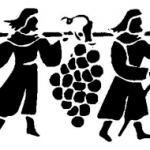As with the previous post, I want to make sure people know I believe SoulShift is excellent material, and these posts are not criticisms, but my notes as I seek to adapt it for use in my community and context.
College Wesleyan Church, the birthplace of SoulShift, has a unique congregation. From my limited, and probably biased, outsiders view, I would call it a place where people are really living out an American dream life. Marion, IN, is a nice college town, away from the urban centers, but not so far away that one couldn’t drive to a major city to enjoy special activities or reach an airport. The church is on the Indiana Wesleyan University campus, and many of the professors attend College Wesleyan Church; this really raises the mean educational level of the congregation, along with the socio-economic advantages of having higher education. Ethnically, Marion is 78% White, but I also imagine that much of the city’s diversity is contained within the university.
 Biblical holiness and maturity is not bounded by demographics, yet we should take into account that Oakdale differs from Marion as we present the material. Here are a few of the shifts that may have to be approached or presented differently:
Biblical holiness and maturity is not bounded by demographics, yet we should take into account that Oakdale differs from Marion as we present the material. Here are a few of the shifts that may have to be approached or presented differently:
- Slave to Child – What if someone grew up with one or both parents absent? What if someone were abused or unloved as a child? For some, the role of a child is the last place they want to be. We may have to emphasize more what God’s intent is for the parent-child relationship before we encourage someone to take that step of embracing God’s love. One person here suggested that he’d rather be called “God’s freedman” over “child” in this shift.
- Seen to Unseen – With the younger part of our congregation, and perhaps some of our immigrants, I predict that some are still or have maintained the reality of the spirit world, while our teens, of which we have many, may be at a stage of life where they challenge what they cannot see for themselves. However, I believe that the unseen is something that we all can experience, even if we cannot see it.
- Consumer to Steward – While the principle still applies, this will be taught in my context to students who don’t have jobs or may very little or are saving for college (perhaps similar to College Church), adults who may not have steady work, and retired people on fixed incomes. However, a move from consumer to steward is not only a mature way to handle money, it is also a way to move out of debt and/or poverty.
- Me to We – I felt this was a necessary in American (or any individualistic) culture, but not everyone in my context was raised in nor necessarily fully embraces American individualism.
photo credit: dolorix (on/off) via photopin cc







I don’t think many in my own congregation in Marion really “Get marion” so I wouldn’t expect someone from out of state to get it. So a few of your observations aren’t true of our city… but I LOVE your adaptation of SoulShift here.
SoulShift is meant to be viral… so you are doing a great job of adjusting it and making it contagious for your own culture. Way to go! Sending people here to see how it’s done!
🙂
I totally admit to being an outsider, and that I was speculating. I wondered if understanding Marion the same as understanding CWC? I was guessing that CWC reflected IWU more so than Marion as a whole, but I could be way off there. Oakdale Wesleyan is currently not a complete reflection of Oakdale, and I imaging many churches only reflect a portion of the larger community. Fun conversation, but maybe off track.
In California, we took SoulShift as is, and it seemed just about every illustration resonated with everyone. 1) I realized I shouldn’t make that assumption everywhere. 2) Going through this experience will help me to adapt other resources. For example, I’d like to, and have been encouraged by Coleen Derr, to adapt The Spiritual Exercises of St. Ignatius with my whole congregation. That is good material that is outside our culture and tradition, but if approached the right way, could be a powerful formation tool.
And thank you for the continued encouragement!
Who is this Ingatius guy everyone is talking about? Did he speak at Catalyst this year or something?
j/k
😉
He’s the new pope 🙂